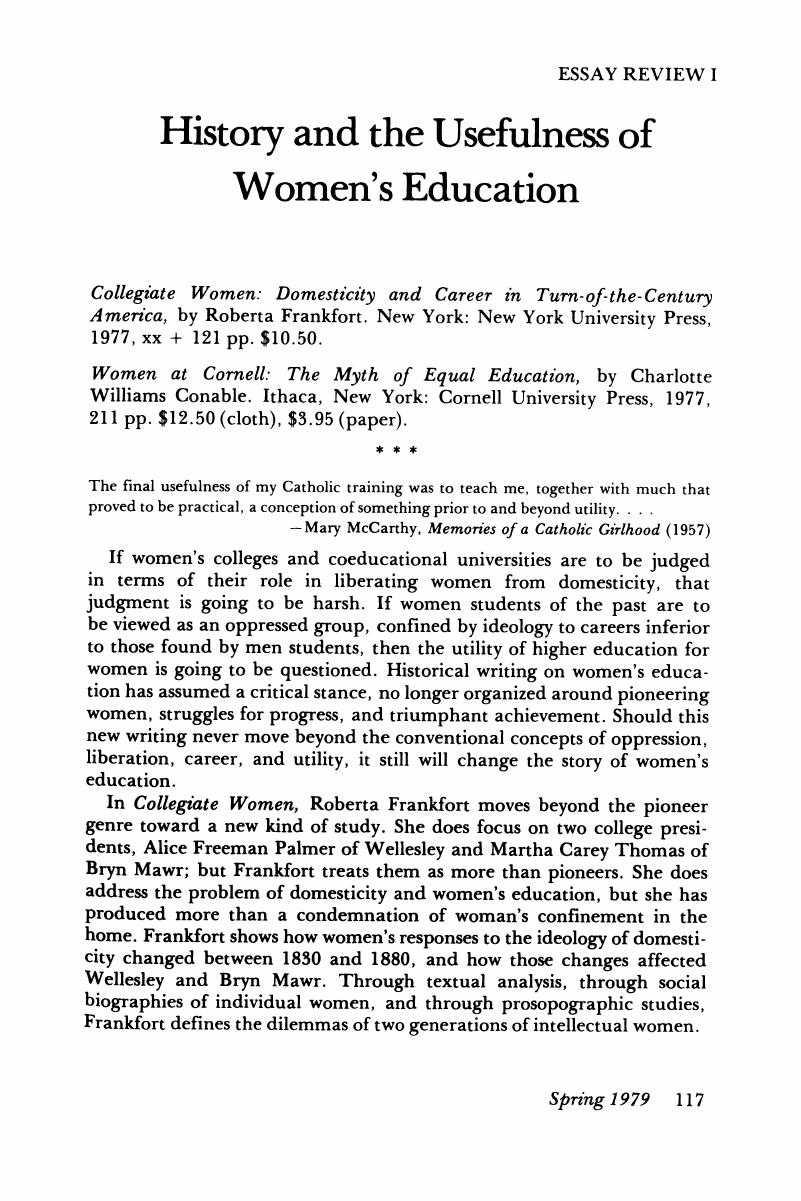No CrossRef data available.
Article contents
History and the Usefulness of Women's Education
Published online by Cambridge University Press: 24 February 2017
Abstract

- Type
- Essay Reviews
- Information
- Copyright
- Copyright © 1979 by History of Education Society
References
Notes
1 Frankfort, Roberta, Collegiate Women: Domesticity and Career in Turn-of-the-Century America (New York, 1977), p. xiv.Google Scholar
2 Ibid., p. 23.Google Scholar
3 Ibid., p. 24.Google Scholar
4 Cross, Barbara M., The Educated Woman in America (New York, 1965), p. 43; Frankfort, , p. 72.Google Scholar
5 A number of studies now under way will provide such information. See for example Kilman's, Gail study of women at Randolph-Macon in Virginia and Wesleyan in Georgia (Ph.D. diss., University of Delaware, forthcoming 1979).Google Scholar
6 Frankfort, , p. 83.Google Scholar
7 Ibid., pp. 96, 110.Google Scholar
8 McCarthy, Mary, Memories of a Catholic Girlhood (New York, 1957), pp. 82, 21.Google Scholar
9 Ibid., pp. 16,93,26.Google Scholar
10 Conable, Charlotte Williams, Women at Cornell: The Myth of Equal Education (Ithaca, New York, 1977), p. 118.Google Scholar
11 Ibid., pp. 118, 112, 132.Google Scholar
12 Ibid., pp. 159, 161.Google Scholar
13 Ibid., p. 166.Google Scholar
14 Ibid., pp. 163, 167.Google Scholar
15 See Sklar, Kathryn Kish, “The Founding of Mount Holyoke Female Seminary: A Case Study in Educational Change,” in Berkin, Carol and Norton, Mary Beth, eds., The Women of America: Original Essays and Documents (Boston, forthcoming 1979); Scott, Anne Firor, “What, Then, Is the American: This New Woman?” Journal of American History 65 (December 1978): 679–703, and Scott's essay in this issue of the History of Education Quarterly. See also Gordon, Sarah H., “Smith College Students: The First Ten Classes, 1879–1888,” History of Education Quarterly 15 (Summer 1975): 147–167.Google Scholar
16 Frankfort, , pp. 30, 38.Google Scholar


